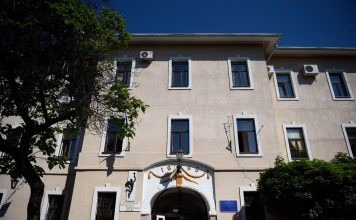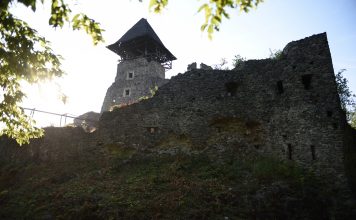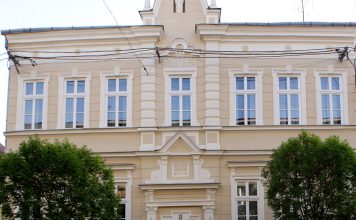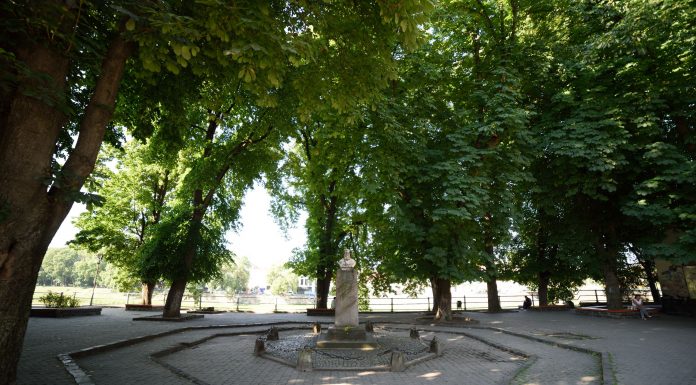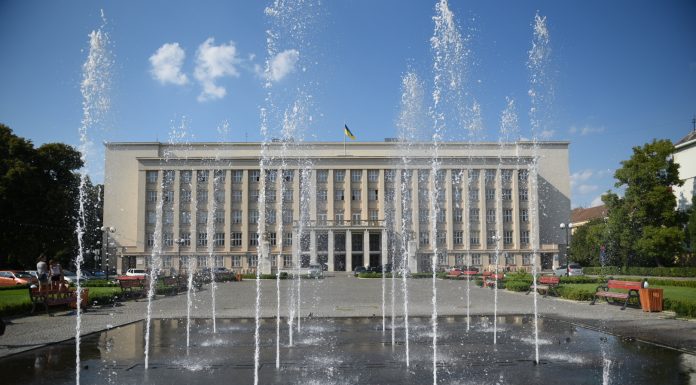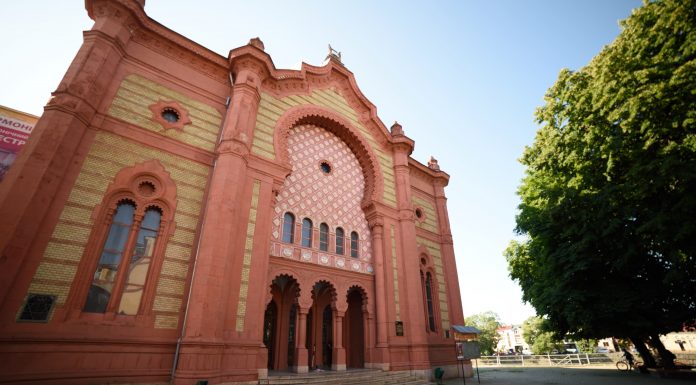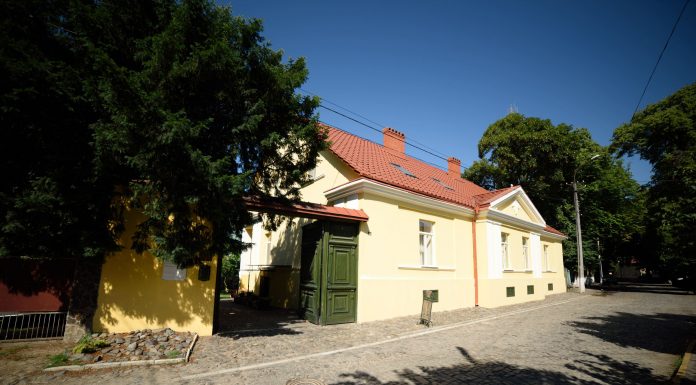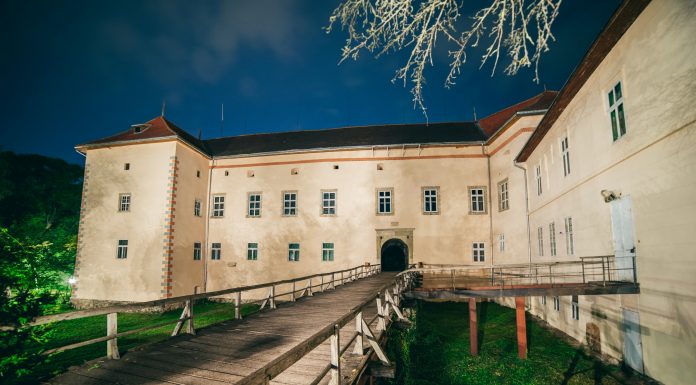Fentsyk Square is one of the most imposing places in Uzhgorod. Its construction began in the middle of the 19th century. Here, almost every building is of historical significance.
At the far eastern end of the square stands the largest and most beautiful Jewish synagogue of Transcarpathia. Next to it, on the bank of the river Uzh, is one of...
Dominated by the regional administration building at one end, since 1999 the square has been decorated with a large statue of Ukraine’s national poet, Taras Shevchenko. In 2001 a grass lawn was installed, with lights. In 2011 a fountain was re-installed. On the left side of the square, there’s a rose garden and right behind it is the building...
Uzhgorod Synagogue was built as a Jewish choral synagogue of the Ashkenazi orthodox community in Uzhgorod. It was designed by architects Gyula Papp and Ferenc Szabolcs in Neo-Moorish style, which intertwines Byzantine and Arab-Moroccan motifs. It opened in 1904.
Currently, the building is used by the Transcarpathian Regional Philharmonic Society, founded in 1946. In 1974, one of the best stage...
Built as a monastery to educate Basilian monks and Ukrainian children, the building was designed by Uzhgorod architect Ernest Kovosh. Its facade overlooks the street, and originally had four-storey central and three-storey side parts, which contained so-called Hanging Gardens.
This was the tallest building in Uzhgorod until World War II. Since 1947, it has been a part of Uzhgorod State...
Kapitulna is the oldest street in Uzhgorod, and was once called Castle Street. This was the only street located within the outer fortifications of the castle. In the 17th century it consisted of about 10 households. In the early 19th century the street gradually acquired the name Kapitulna, from “kapituliy”, or “cathedral chapter”, which was the place where advisors...
Uzhgorod Castle has everything: history, legend, mystery, sculptures and museums. It’s a great place for taking photos, romance and love. It is first mentioned in the 10th century.
The complex has a regional museum, which holds permanent exhibitions depicting history, culture, war, household items, traditions and life in general. On the other hand, the unique “torture chamber” and secret labyrinths...

